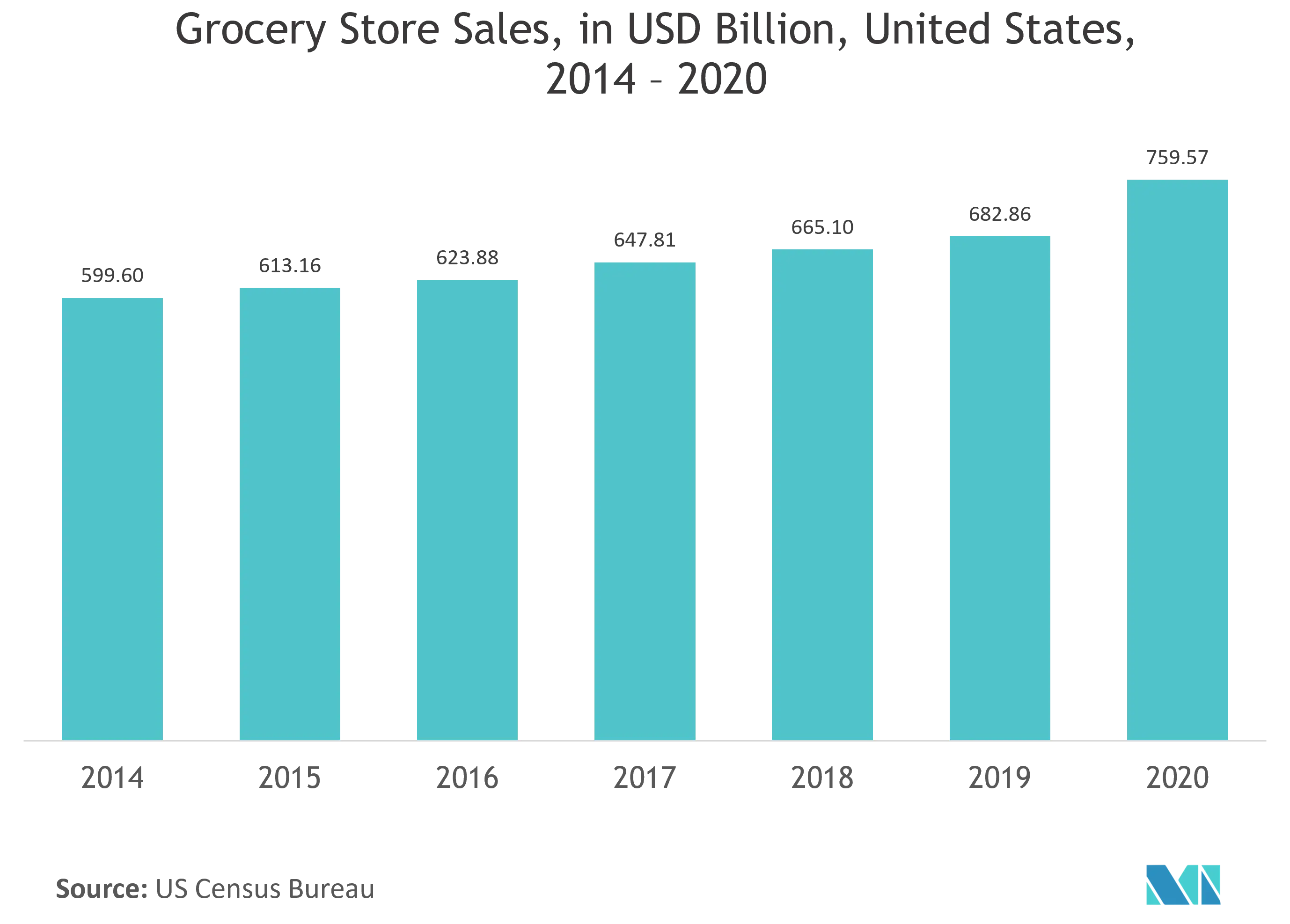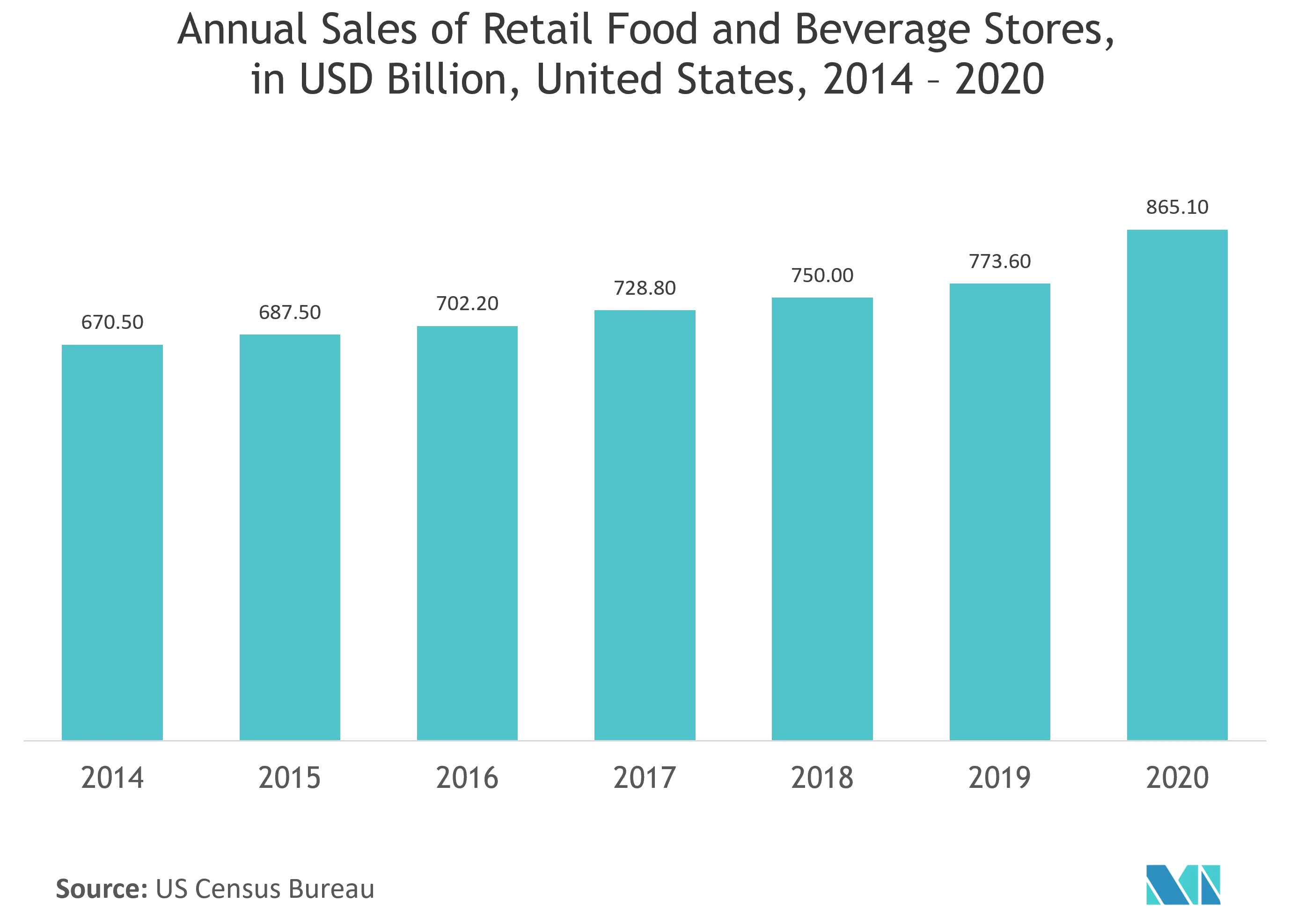Market Trends of North America Active and Intelligent Packaging Industry
This section covers the major market trends shaping the North American Active & Intelligent Packaging Market according to our research experts:
Active Packaging is Observing a Significant Increase
- The concept of active packaging is completely associated with the quality of the packaged content. Active packaging interacts directly with the packaged product, as it is in direct contact with the product and can interact chemically or biologically with the packaged product.
- To improve the product's shelf life, certain components are incorporated into packaging that releases or absorb from or into the packed substance to prolong its shelf life and sustain the quality of the product. This process is termed active packaging. For this purpose, various technologies are used, which include oxygen scavengers, microwave susceptors, odor absorbers/emitters, moisture/ humidity absorbers, and anti-microbial packaging.
- The retailers in the United States are heavily reliant upon fresh-cut operations at the back of stores using regional processors. For instance, Church Brothers Farms is one such company that predominantly caters to the foodservice, with around 15% of its product going to retail, which indicates that a major portion of the country has yet to switch to MAP.
- The rising demand for packaged food is boosting the active packaging market. The growing inclination of customers toward packaged and ready-to-eat foodstuffs is propelling the active packaging market, and this trend is expected to continue within the forecast period. Chopped and packaged fruits and vegetables employ active packaging to a large extent, releasing gases within the packaging.

Beverage Industry is One of the Significant Factor for Market Growth
- Consumers have been shifting towards healthier and hygienic products, and they have been demanding healthy beverages, fruit drinks, etc. Along with bottled water, some fruit drinks are also being made in smaller sizes for travel and mobility purposes. Simultaneously with the increasing demand for healthier beverages, consumers are fascinated by carton packaging, providing environmental sustainability and recyclability. This has been attracting milk and beverage producers to adopt carton packaging for liquids.
- Cold-pressed juices are gaining popularity in the United States due to the growing health-consciousness and demanding organic and natural ingredients and minimally processed products. Brand owners have been designing cartons for juices as it offers high protection and excellent long-term shelf life at room temperature and is eco-friendly.
- Also, the introduction of eco-friendly packaging and flavored water with regulated ingredients has escalated the growth in carton water usage. According to International Bottled Water Association, bottled water is the widely used beverage product in the United States (by volume), which grew to 15.2 billion gallons in 2020 from 14.4 billion gallons in 2019. Substituting plastic bottles with cartons has a major impact on the market.
- In May 2020, Sustana Fiber's mill in Québec announced new processes to recycle multilayer juice and milk cartons. It can now annually process 3,000 to 4,000 tons of these cartons collected from across the country. Each recycled multilayer carton provides the raw material needed to continue producing essential items like toilet paper and paper napkins, thus improving recycling and recovery efforts. Increased carton recycling helps preserve natural resources, meet important diversion and recycling goals, create jobs, and, in the case of COVID-19, helps avoid shortages of the pulp needed to manufacture essential items.


